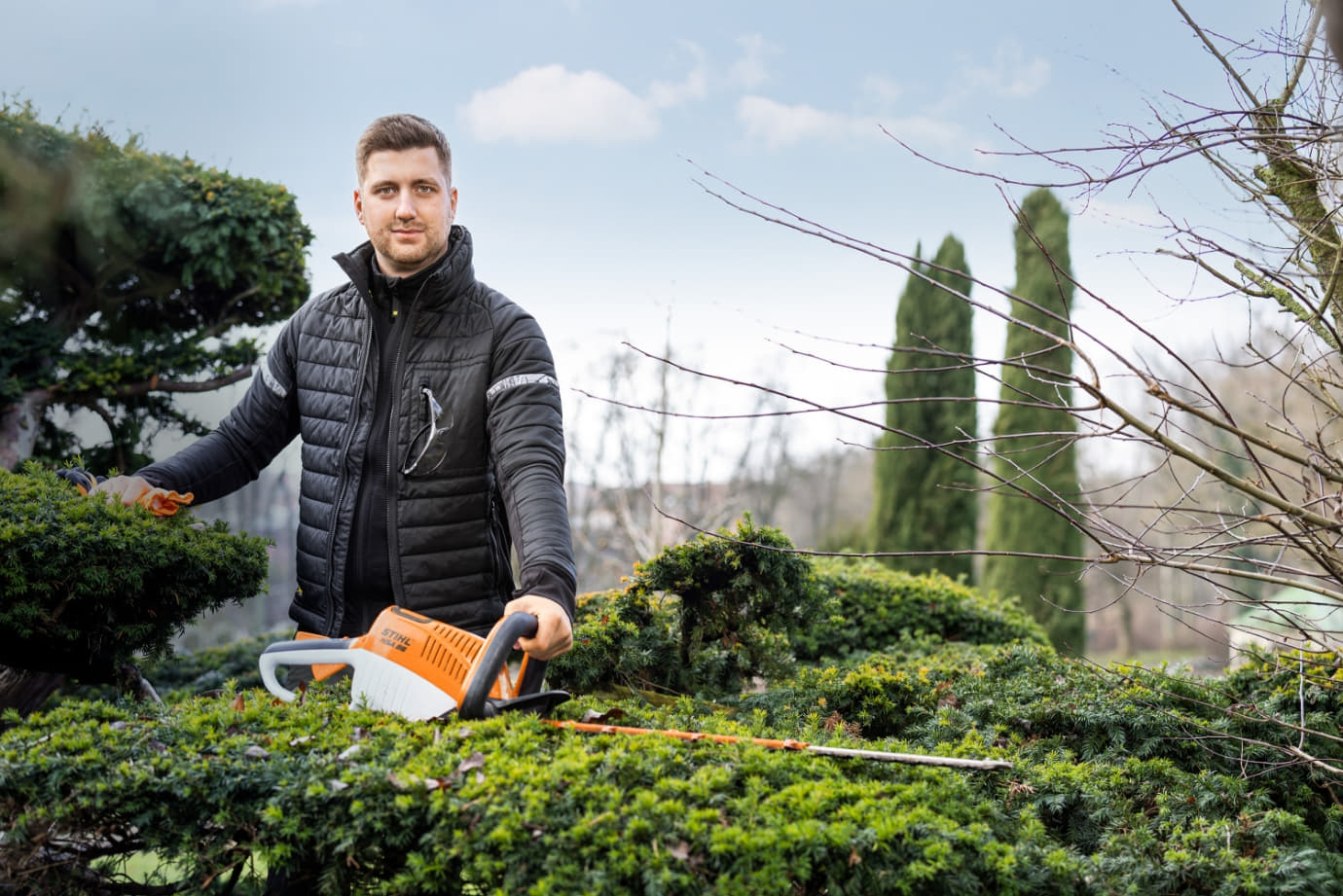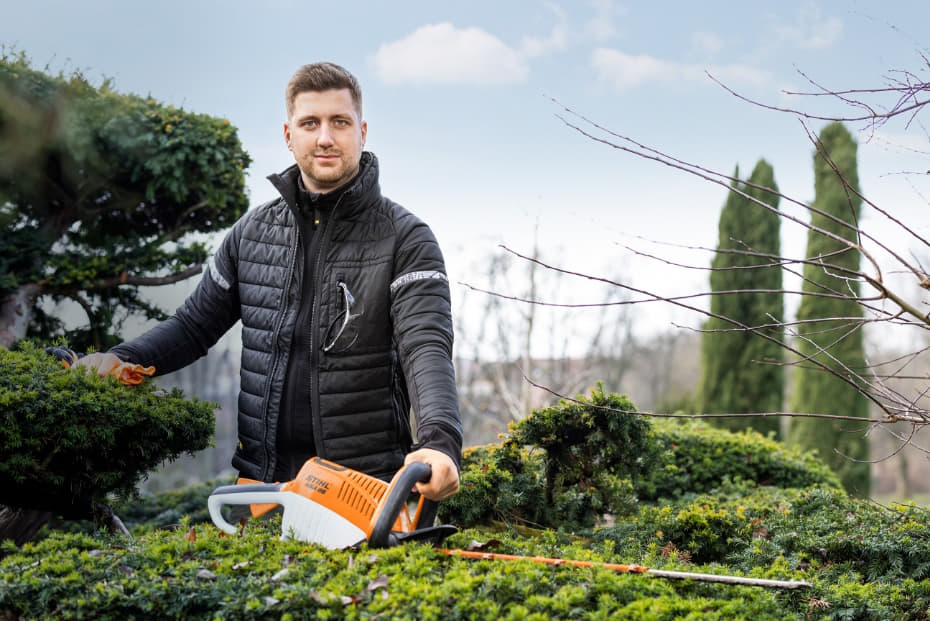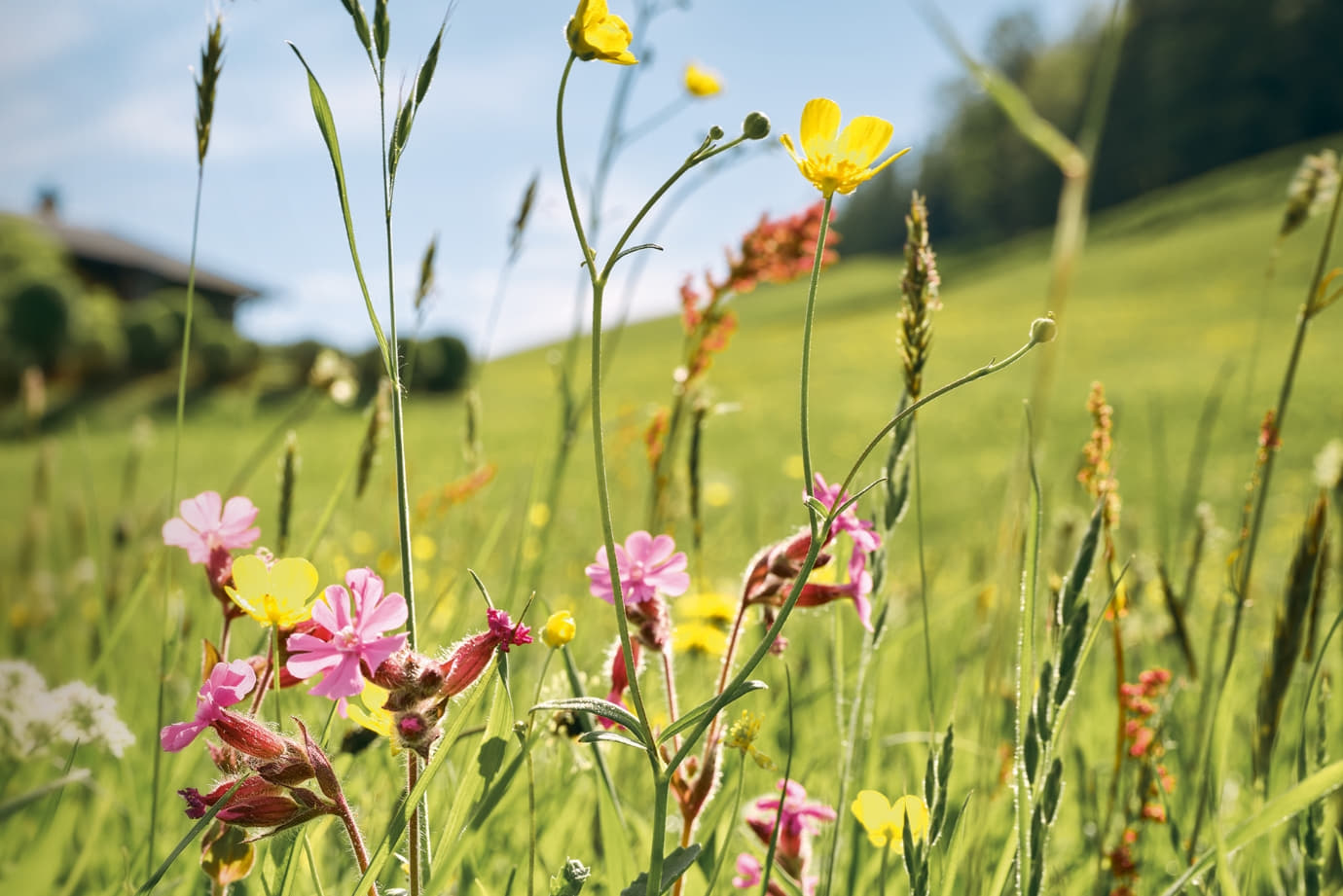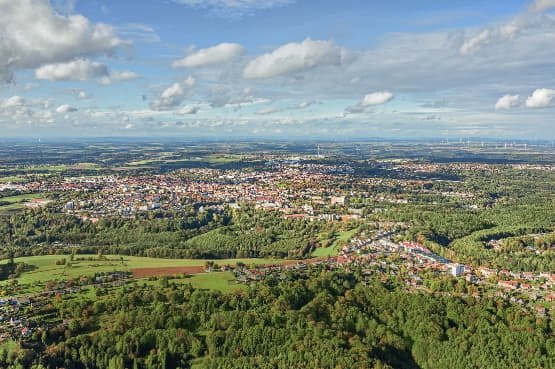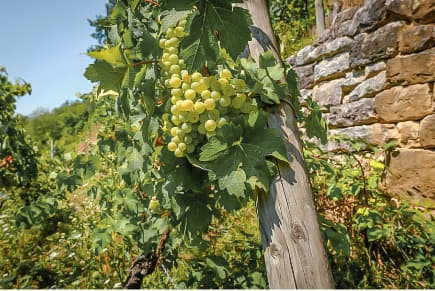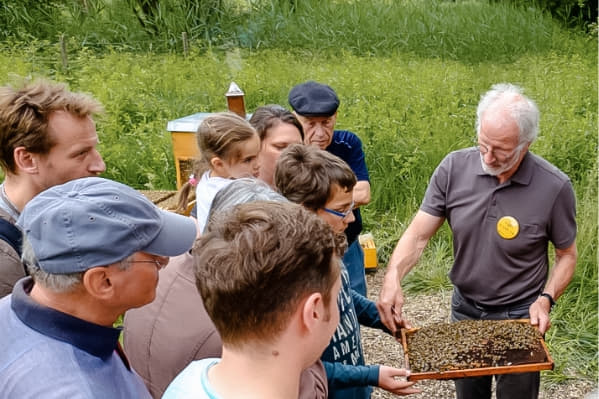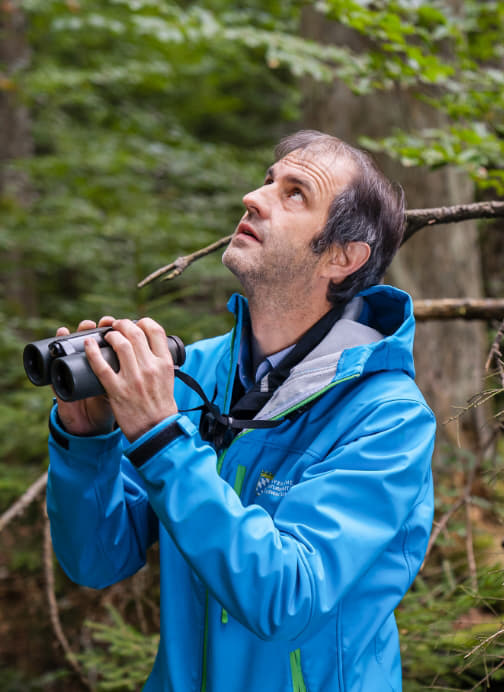German engineering as a driver of innovation
Our aim as a technology leader has always been to make it easier for people to work in and with nature – something STIHL has stood for as an organization and as a brand for almost 100 years. Thanks to proven STIHL quality, we are able to offer our customers a wide range of gasoline-powered, electric, and battery-operated power tools that embody sustainability from the drawing board on out.

Andreas Stihl attached great importance to both the constant advancement of the products made by STIHL and the expansion of the portfolio. In 1959, he revolutionized forestry work by launching the STIHL Contra, the first gearless gasoline-powered chainsaw. Based on the technical foundation laid by the Contra, STIHL worked tirelessly to further enhance its chainsaws. From the antivibration system (first installed in the Contra in 1965) and the quick-stop chain brake to catalytic converters and technologies engineered to reduce emissions, STIHL’s focus has always been on environmental protection, performance, repairability, comfort, and safety. Our most recent innovations include the STIHL MS 881, the world’s most powerful production chainsaw and the only one in its class to meet the current EU emission standards, and the STIHL MSA 300, capable of reduced-noise, emission-free performance that also happens to be the most powerful battery-operated chainsaw on the market today. In addition, we are committed to promoting the development of digitally connected products and digital services for consumers and professional users alike.
STIHL products have always been known for their particularly long service life, repairability, and high quality, which allows them to make a contribution to conserving resources. Our outdoor power tools are engineered to keep running, which is why it is not uncommon for them to be handed down from generation to generation. Our trained authorized dealers ensure proper maintenance and provide repairs – should they become necessary. Tools such as saw chains can be sharpened, helping them achieve excellent cutting performance over a long service life. With the patented Hexa cutting system, we recently started making it possible even for less experienced users to sharpen saw chains the easy way. Spare parts are available for at least ten years or longer after we stop making a particular series. Innovation keeps us a market leader. We have an impressive depth of development expertise in-house, which we aim to leverage fully in our technologies and products. To ensure the desired premium STIHL quality, we expect the same of our suppliers as well. Our international and interdisciplinary development team makes sure that our products offer the best possible combination of lightweight engineering and durability, providing our customers with durable products that not only fulfill legal regulations and technical standards regarding fuel consumption, emissions, and noise, for example, but also incorporate best-in-class technology.
Outstanding quality
Quality lies at the core of the STIHL brand. All STIHL products stand for durability, repairability, reliability, and safety. To help us live up to our premium standards, we employ a wide range of use-oriented testing techniques, many of which were developed in-house. These techniques allow us to examine the steel composition of various alloys while also performing vibration, noise, and other durability and quality tests, to name just a few examples. We also test our saw chains, simulate adverse events, and examine the contents and chemical composition of the fuels and lubricants we develop.
Research and development (R&D)
At our central development center – located at the founding company’s headquarters in Waiblingen, Germany – over 700 engineers and technicians from a variety of fields work to improve existing STIHL technologies and develop new ones. While the STIHL companies worldwide help keep us close to local markets and our production sites, the overall responsibility for R&D activities lies with the Executive Board member for Research and Development at the German founding company. Outside the main project development site in Germany, development engineers at the production centers around the world are connected to each other through shared systems and projects in order to promote industrialization and local development. What all of them have in common is that they must meet the strict guidelines of our STIHL product development process, which are defined in our internal directives.
In recent times, ever-stricter exhaust and emissions standards for internal combustion engines have been fueling a surge in innovation in the battery segment. Our products’ use phase offers tremendous potential for achieving the goal of making our entire value chain climate-neutral in the long term (see “Environment”). As a result, our R&D activities focus both on the further optimization of our tools powered by internal combustion engines and on the expansion of our expertise in battery development. Our goal is to maintain our leading market position in the gasoline-powered segment, to leverage further potential through technologies such as low-CO2 fuels, and to continuously enhance our position in the field of battery-operated tools.
Our R&D activities allow us to enhance scientific research and upgrade technological capabilities – a contribution to achieving one of the targets of the United Nations Sustainable Development Goal SDG 9, which aims to promote sustainable industrialization and foster innovation.
Digitalizing products and processes
For many years now, STIHL has been dedicating its efforts to exploring the opportunities associated with increased digitalization. The use and analysis of data (“big data”), for example, has the potential to enhance the efficiency of how we manage production or further optimize the sale and use of STIHL equipment when it comes to factors such as fuel or electricity consumption. Operating data can also help improve the way products are engineered, thereby further increasing their quality and reliability. As a result, big data is capable of indirectly contributing to the durability of products and to the use of materials in a way that conserves resources.
Electronics expertise
Alongside digitalization, we are focusing our efforts on the fields of robotics, sensors, and artificial intelligence. In 2016, we opened a state-of-the-art center of excellence for battery and electrical technology in Waiblingen, Germany. In 2021, we teamed up with the Elrad International Group to found ZE Electronic Manufacturing Services Ltd., a joint venture dedicated to the production of electronic assemblies that plays a key role in our battery strategy and enhances our electronics expertise. Our innovative power is also reflected in roughly 2,500 patents. To strengthen and expand our innovative power, we lead alliances with scientific institutions and development partners and carry out research in cooperation with colleges and universities.
Circular economy
Circularity plays a pivotal role in the STIHL sustainability strategy. The goal of a sustainable circular economy is to minimize the use of resources and the production of waste through a variety of approaches. Durability and repairability, for example, help conserve resources. In general, the reuse and refurbishing of products also have the potential to make an important contribution to a functioning circular economy through new business models and innovations built around product-as-a-service solutions and other concepts (see “Business model”). Devices or tools no longer fit for use can be recycled as a final step – an aspect that is at the center of our battery-powered products. Authorized STIHL dealers may take back portable batteries depending on their obligation to do so.
100% recyclable
When it comes to conserving resources when using raw materials, the STIHL magnesium diecasting plant in Germany’s Eifel region is blazing new trails for our production network. The diecasting plant manufactures more than 600 different products made from magnesium. Every day, it processes several metric tons of magnesium, which is roughly one-third lighter than aluminum and is fully recyclable. The on-site resmelting unit is capable of melting down and preparing some 4,000 metric tons a year without any loss of quality compared to primary materials.
In line with the goal of a circular economy, we aim to enhance our processes and products in order to conserve resources. When developing new products, we pay particular attention to using components that can be recycled. We aim to make our products reusable to the greatest extent possible, with a material recycling rate of over 85 percent in accordance with ISO 17341. In 2022, we plan to perform a potential analysis and derive concrete goals for increasing the percentage of secondary raw materials. We also intend to conduct a feasibility study on completely circular products (manufacture and use) by 2023.
Product safety
The safety of our customers while they work with our outdoor power equipment is essential. Compliance with technical standards, the latest technological developments, and legal requirements is the foundation on which our products are built. STIHL plays a leading role in defining global ISO and IEC safety standards, allowing it to systematically promote the advancement of safety requirements. STIHL’s internal findings on the strength of guards and handles, and on electronic circuits and sensors, for example, have been incorporated into international standards and shared beyond the company. As a technology leader, we look back with pride on the many innovations STIHL has pioneered that have made an important contribution to increasing the safety of customers. Back in 1964, for example, we became the first manufacturer to offer chainsaws with an antivibration handle. When it comes to keeping an eye on the safety of our products throughout the marketing and sales process, authorized dealers offer the opportunity for appropriate product instruction and safety training for users. The same applies when buyers purchase products in STIHL online shops.
Welcome to the world of sustainable product development
Green fuels and lubricants
STIHL is conducting research on innovative new fuels to improve the environmental footprint of its products during use. The goal is to reduce climate-damaging emissions during combustion by a significant margin (Scope 3 emissions, see “Environment”). Our developers are working on synthetic fuels, or synfuels, where the original mineral oil-based fuel has been supplemented through synthetically produced or bio-based materials. STIHL MotoMix is a fuel developed in-house that we already offer today. Scheduled to hit the market in 2022, STIHL MotoMix ECO is a new generation of fuel that will make it possible to reduce CO2 emissions by an additional 8 percent compared to the MotoMix blend available today. We are also developing fuels and lubricants in-house that are engineered specifically for our outdoor power equipment. STIHL Multioil Bioplus, a versatile lubricant with a variety of uses, is made of 90 percent renewable raw materials and is 90 percent biodegradable.
Low-spin cutting tools
To reduce flying debris during garden and landscape maintenance, STIHL has developed an innovative cutting system it calls the reciprocator. The low-spin cutting tool features two reciprocating blades. As a result, the system is ideally suited for trimming weeds and grass in urban settings and can help minimize the use of weed killers.
